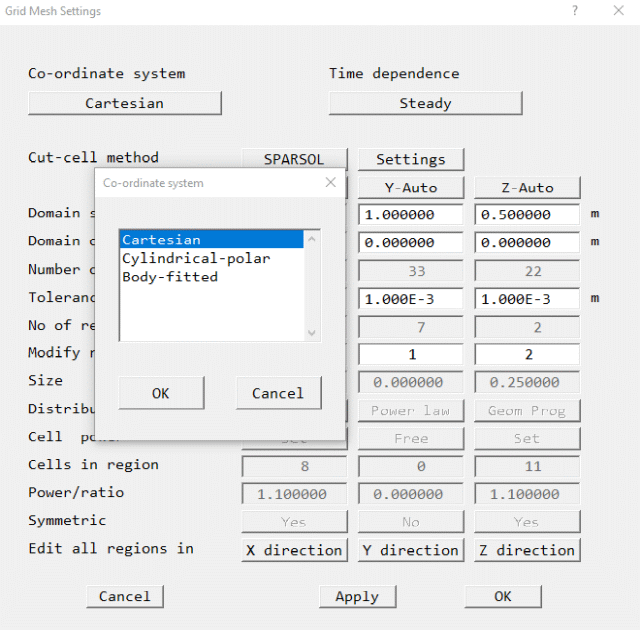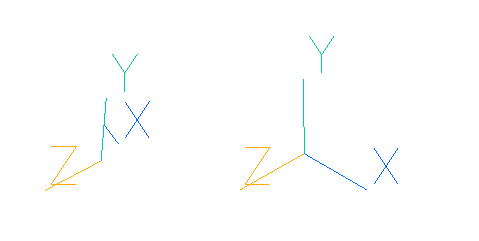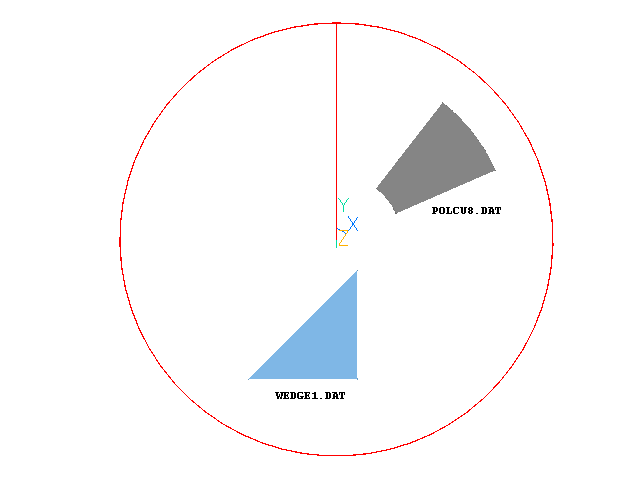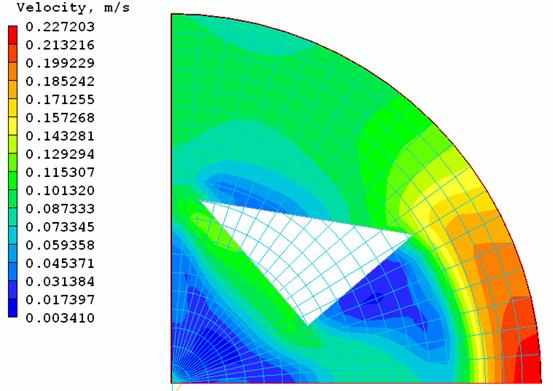
Cylindrical-polar coordinates are activated by setting CARTES=F in the Q1 file.
To switch between the co-ordinate systems in the VR-Editor, click on Menu / Geometry, then on Co-ordinate system. The Cartesian grid is the default.

Image: Grid Mesh Settings Dialog
The change between Cartesian and Cylindrical-polar can be made at will in either direction.
The inner radius of the domain is set via RINNER. This sets the distance from the axis of symmetry to the cylinder y=0.
The origin of the polar system is at the origin of the cartesian system. The Z axis is common to both. When the polar X=0, the Y axis aligns with the cartesian Y. When looking along Z towards the origin with Y pointing up, X increases in the clock-wise direction, as shown below:

The treatment of object size is described here, and object position here.
To summarise, the position of the bounding box origin is always set in polar coordinates. The size can be in polar coordinates (whenever a default geometry is used), or in cartesian coordinates (whenever a non-default geometry is used). This allows objects to either follow the grid when they change size, or to keep their proper shapes.
The image below shows two objects, both with their X and Y sizes set to 0.5.

Image: Object geometries for Polar
PARSOL works correctly in polar coordinates.

Image: Flow past a wedge in Polar coordinates
Please bear in mind that the grids get progressively bigger with increasing radius so the chance of finding multiply-cut (and hence illegal) cells also increases.